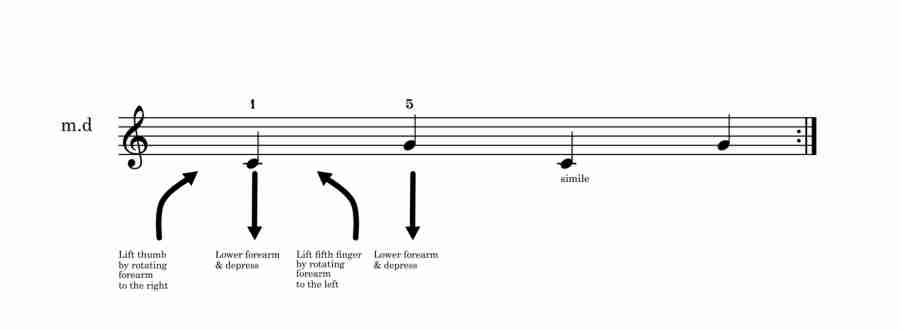
Prolific piano teacher and pedagogue Dorothy Taubman (1917-2013) formed a technical approach on the piano aiming to enable pianists to express themselves to the fullest. For Dorothy Taubman, there was always a way for pianists to avoid all possible limitations that stop them from excelling. She strongly advocated throughout her life that pianists should work on their interpretation undistracted from pain, fatigue, injuries and other trivial matters. In her words “… as time went on, I saw more and more wonderful young prodigies being cut-down much too early”. Thus, she sought to create a framework by which pianists can reach a possible interpretational perfection.
With Taubman's approach, pianists can:
- Prevent injury and muscle fatigue
- Cure injuries that pianists unwittingly come to experience, and come back to performing, fully recovered
- Return the body to its physiological functioning state, to allow the pianist to work anew on their interpretation
- Enable the pianist to fully express themselves, free from any conceivable body limitations
Central to Dorothy Taubman's technique is the coordinate motion. This is a holistic approach, per se, to solving one's technical problems by allowing the body and mind to work in synergy; pianists should think of their body as a single unit and its parts should act optimally to assist each-other. Our minds should instruct all parts of our body involved in piano-playing —mainly forearms, hands and fingers— using common sense. We should avoid awkward movements, and use the middle part of a motion; this is in essence when we don’t force our body parts to reach the limits of their effective motion. Regarding the piano, it could mean to avoid stretching our fingers to their maximum limits, for instance. We should aim to use the natural alignment of our hands, fingers and arms continuously. Well, use the natural alignment as much as possible, that is; arguably, playing the piano is almost an unnatural endeavour for our bodies since we use positions that are not meant to be employed in our everyday lives; we often stretch (to play a long chord, for example), twist and curl our fingers and force our bodies to produce music with strenuous positions and motions. The Taubman approach seeks to eliminate all those aberrant movements that can ultimately cause injury, and let us concentrate on the music. Piano students will undoubtedly enjoy the Taubman approach if only by understanding that their bodies work in tandem with their minds. Students are encouraged to respect their natural body physiology and urged to work on their technique using common sense. As with other techniques that promote healthy pianistic lives, a potential student can only truly grasp the essence of the approach by attending classes with a certified practitioner. A specialised teacher is also required because of the eminent need to assess a student’s unique physiology to plan out their lessons. Potential students may also realise that techniques that they already use in their playing are naturally supported by the Taubman Approach; for example, the rotation of the wrist with which pianists assist their fingers —in ascending arpeggios or in passagework— plays a central role in the Taubman Approach.
Here are a few examples that could help the pianist start off their journey of the Taubman Approach on the right track.
Example 1
In this first example, we embrace one of the technique's main pillars, the rotary motion. The pianist is urged to avoid playing the passage by solely using the motion of their fingers; instead, by employing the natural rotary movements of both the forearm and the hand, the pianist is protecting their fingers from fatigue.

Example 2

Example 3

Example 4

Example 5
